Do you have a question about the Panasonic Diga DMR-BWT720 and is the answer not in the manual?
Details on BD-Video and DVD-Video region code compatibility.
Precautions for the unit regarding electrical shock, liquids, and accessories.
Guidelines for safe use and handling of the power cord and plug.
Instructions for safe and proper placement of the unit for ventilation and stability.
Information on Cinavia technology for copyright protection of commercial content.
Details on supported media types, recordable/playable contents, and file formats.
Explanation of different recording modes (DR, HG/HX/HE/HL/HM, XP/SP/LP/EP/FR).
Guidelines for maintaining the HDD, setup, moving, and cleaning the unit.
Explanation of the remote control buttons and their functions.
Instructions for connecting the unit to a TV, amplifier, and other equipment.
Steps for connecting the unit to a home network via LAN or Wireless.
Overview of how to access and change unit settings via the setup menu.
Initial setup wizard for channels, clock, and basic functions.
Steps for configuring network connectivity for home network and internet.
How to access main functions like playback, recording, and settings.
How to select channels and edit the channel list.
Guide on navigating and using the TV Guide for program information.
Controls for subtitles, audio, teletext, and aspect ratio during viewing.
How to use time-shift functions for live broadcasts.
Steps for recording TV programs using one-touch or timer methods.
How to check, pause, stop, and play recordings in progress.
Details on setting up scheduled recordings using TV Guide or manually.
How to navigate and play content stored on the internal HDD.
Instructions for playing content from external media like discs, SD cards, and USB.
Controls for playback functions like search, pause, and frame-by-frame.
Information and settings for playing 3D video content.
How to delete recorded video files from the HDD or media.
Functions for renaming, protecting, dividing, and changing titles.
Converting recorded titles between different recording modes.
General process for copying video titles between different media.
Detailed steps for creating and managing a list of titles to copy.
Important considerations and limitations for various copying scenarios.
How to view photos stored on HDD, discs, SD cards, or USB devices.
Options for configuring photo slideshows, including music and effects.
Functions for organizing and managing photos, like adding to albums or protecting them.
How to copy photos from media to the HDD or other storage.
Instructions for playing music from CDs, MP3 files, and HDD.
How to access and play music files stored on the internal HDD.
Controls for music playback, including stop, pause, search, and slideshows.
Functions for managing music albums, tracks, and playlists.
How to record video from external sources like set-top boxes or cameras.
Process for copying AVCHD or MPEG2 video to HDD or discs.
How to use the unit for media sharing over a network via DLNA.
Using the unit to play media from a DLNA server controlled by a smartphone.
Operations for managing discs, including naming, protection, and formatting.
Features for controlling connected Panasonic equipment via HDMI.
Accessing online services and video communication through the unit.
Options for adjusting playback settings like audio, subtitles, and picture modes.
Guide to configuring various unit settings like TV tuning, display, and network.
Common problems like the unit not working or discs not ejecting.
Troubleshooting steps for screen size, black screens, and reception problems.
Addressing problems with image lag, distortion, and incorrect 3D output.
Solutions for no sound, distorted sound, or inability to change audio channels.
Common problems related to recording, scheduling, and copying functions.
Troubleshooting DLNA, VIERA Link, and wireless network connection problems.
Specific issues and solutions related to setting up the network connection.
Explanations for various error messages and status indicators.
Technical details including dimensions, power, supported formats, and interfaces.
Information on software licenses and trademarks used in the product.
Details on BD-Video and DVD-Video region code compatibility.
Precautions for the unit regarding electrical shock, liquids, and accessories.
Guidelines for safe use and handling of the power cord and plug.
Instructions for safe and proper placement of the unit for ventilation and stability.
Information on Cinavia technology for copyright protection of commercial content.
Details on supported media types, recordable/playable contents, and file formats.
Explanation of different recording modes (DR, HG/HX/HE/HL/HM, XP/SP/LP/EP/FR).
Guidelines for maintaining the HDD, setup, moving, and cleaning the unit.
Explanation of the remote control buttons and their functions.
Instructions for connecting the unit to a TV, amplifier, and other equipment.
Steps for connecting the unit to a home network via LAN or Wireless.
Overview of how to access and change unit settings via the setup menu.
Initial setup wizard for channels, clock, and basic functions.
Steps for configuring network connectivity for home network and internet.
How to access main functions like playback, recording, and settings.
How to select channels and edit the channel list.
Guide on navigating and using the TV Guide for program information.
Controls for subtitles, audio, teletext, and aspect ratio during viewing.
How to use time-shift functions for live broadcasts.
Steps for recording TV programs using one-touch or timer methods.
How to check, pause, stop, and play recordings in progress.
Details on setting up scheduled recordings using TV Guide or manually.
How to navigate and play content stored on the internal HDD.
Instructions for playing content from external media like discs, SD cards, and USB.
Controls for playback functions like search, pause, and frame-by-frame.
Information and settings for playing 3D video content.
How to delete recorded video files from the HDD or media.
Functions for renaming, protecting, dividing, and changing titles.
Converting recorded titles between different recording modes.
General process for copying video titles between different media.
Detailed steps for creating and managing a list of titles to copy.
Important considerations and limitations for various copying scenarios.
How to view photos stored on HDD, discs, SD cards, or USB devices.
Options for configuring photo slideshows, including music and effects.
Functions for organizing and managing photos, like adding to albums or protecting them.
How to copy photos from media to the HDD or other storage.
Instructions for playing music from CDs, MP3 files, and HDD.
How to access and play music files stored on the internal HDD.
Controls for music playback, including stop, pause, search, and slideshows.
Functions for managing music albums, tracks, and playlists.
How to record video from external sources like set-top boxes or cameras.
Process for copying AVCHD or MPEG2 video to HDD or discs.
How to use the unit for media sharing over a network via DLNA.
Using the unit to play media from a DLNA server controlled by a smartphone.
Operations for managing discs, including naming, protection, and formatting.
Features for controlling connected Panasonic equipment via HDMI.
Accessing online services and video communication through the unit.
Options for adjusting playback settings like audio, subtitles, and picture modes.
Guide to configuring various unit settings like TV tuning, display, and network.
Common problems like the unit not working or discs not ejecting.
Troubleshooting steps for screen size, black screens, and reception problems.
Addressing problems with image lag, distortion, and incorrect 3D output.
Solutions for no sound, distorted sound, or inability to change audio channels.
Common problems related to recording, scheduling, and copying functions.
Troubleshooting DLNA, VIERA Link, and wireless network connection problems.
Specific issues and solutions related to setting up the network connection.
Explanations for various error messages and status indicators.
Technical details including dimensions, power, supported formats, and interfaces.
Information on software licenses and trademarks used in the product.
| Brand | Panasonic |
|---|---|
| Model | Diga DMR-BWT720 |
| Category | Blu-ray Player |
| Language | English |
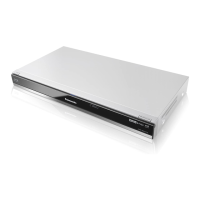
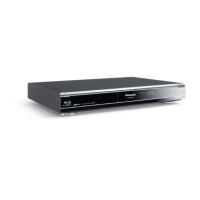
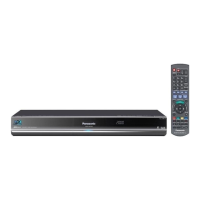
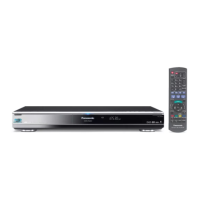
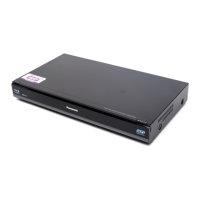
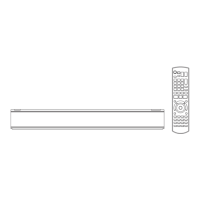
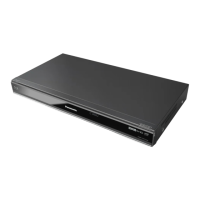

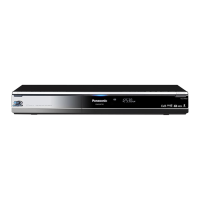
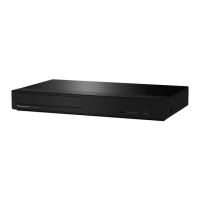
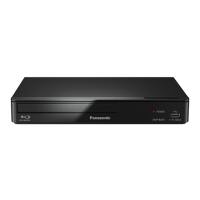
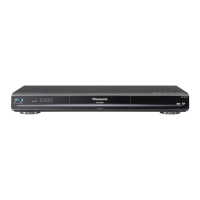
